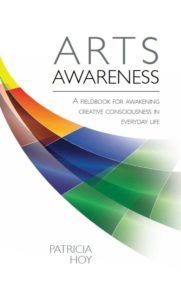 Are you comfortable writing for a specific audience, such as an academic or medical audience, and a little nervous branching out to write for a more general public or just a different type of reader than you are used to? If so, know that you are not alone.
Are you comfortable writing for a specific audience, such as an academic or medical audience, and a little nervous branching out to write for a more general public or just a different type of reader than you are used to? If so, know that you are not alone.
In fact, as I prepare for next week’s course on Healthcare Leadership and Publishing through Harvard Medical School, I’ve been jotting notes and feedback on some of the submissions from doctors, therapists and other healthcare professionals who will be in my writing workshops–and a common theme has emerged. In a nutshell, these writers need to play to their transferrable strengths, such as reasoning, ability to articulate complex ideas, and–in many cases–keen observational skills, while learning to write in a more conversational and accessible style for the public.
If you’re used to writing for an academic audience and want to expand to writing blog posts or a book, you’ll need to:

Play up the Stories: It’s true that you need to adhere to HIPAA standards and be careful of divulging patient information. However, you can weave together several patients and their stories and make them into a composite. Stories make the medical information come to life for your readers and draw them in to read more. Many medical professionals have keen observational skills. Use them to bring these stories to life.
Show; Don’t Tell: In an academic setting you may use statistics or studies to paint a picture; you can do that for a broader audience, as well. Just be sure to keep it accessible and understandable. In addition, you can employ all the senses (not all at once, though) in your writing to bring it to life.
Use Dialogue: Several of the writing samples I read last night did an excellent job of using dialogue to immerse the reader in a scene. In most cases, adding a few subtle actions will break up the dialogue and make the scene even more real. One of my pet peeves? Read your dialogue aloud and make sure it sounds exactly like something that person would say. Use contractions 99% of the time, since that’s how people truly speak. Only put quotations in quotation marks. If you’re summarizing someone’s points, that should not be in quotation marks.

Avoid Jargon; Be Conversational: When you’re immersed in a culture or environment, sometimes it’s hard to even realize which terms will sound foreign to someone from outside of that environment. You may find a beta reader or two who is not in your field who can tell you which terms are unclear. In general, write in plain language that an eighth grader can understand. One trick is to pretend you are writing/talking to a patient unfamiliar with medical terms and medicine. What would you say to them? Write that way. You may even find it helpful to picture a specific person.
Keep Your Audience in Mind: Identify your core readers and keep them in mind as you write. What metaphors would resonate for them? What stories or examples can they relate to? What are their dreams, desires, fears or problems as they relate to material in your book? Be sure to address concerns of fears they may have that would keep them from benefiting from your information. Think about things that would help them to integrate or apply the information to their lives. Would exercises help? Questions for reflection? As in the previous point, imagining a specific reader and writing to that person can help make the material resonate better for your readers.



Thanks for Sharing such a nice content.
waiting for your next blog.
Nancy Edwin.
Lead Writer at Pepgra